Ottawa’s Exasperating Tailgate
A convoy of truckers, nationalists, and libertarians occupy downtown Ottawa. But will it make a difference?
A crowd of thousands sits outside parliament. Two chants dominate: "Freedom" and "Canada."
The words "Fuck Trudeau" are emblazoned on their flags, signs, tuques, hoodies, and trucks. Merchandisers peddle sweatshirts with Prime Minister Justin Trudeau's name superimposed on a cartoon noose. The smell of truck exhaust hangs heavy in the air.
On Jan. 15, proof of vaccination became mandatory for truckers crossing the border from the United States. According to the Canadian Truckers Alliance, 80 per cent of truckers are vaccinated, but those who weren’t saw the measure as an affront to their rights.
Since Jan. 27, a steady stream of truckers, protesters, and onlookers have made the pilgrimage to Parliament Hill in Ottawa.
As the “Freedom Convoy” poured into the capital, it was immediately clear that promises of a respectful protest could not be ensured. Following its entrance into the city, Trudeau vacated Rideau Cottage for his country home at Harrington Lake. He cited a prior exposure to COVID-19 and would later announce he had tested positive.
Day and night, the protesters made themselves heard. As one got closer to the fray of trucks along Rideau St. the sound of truck horns was constant and near-deafening.
Signs of intoxication among protesters were immediately apparent, although Ottawa’s liquor stores had been closed to prevent this. As early as 9 a.m., a few could be seen drinking, although the number of those drinking swelled as the day wore on.
Protesters also urinated on the National War Memorial. Brendan Ciesieliki, whose father and great-grandfather were war veterans, was outraged. Since Saturday, he's stood watch by the memorial to prevent a similar situation from reoccurring.
“When I saw what happened here on Saturday night, it brought me to tears to see that kind of disrespect. I knew I had to come here and make sure people are respectful,” he said.
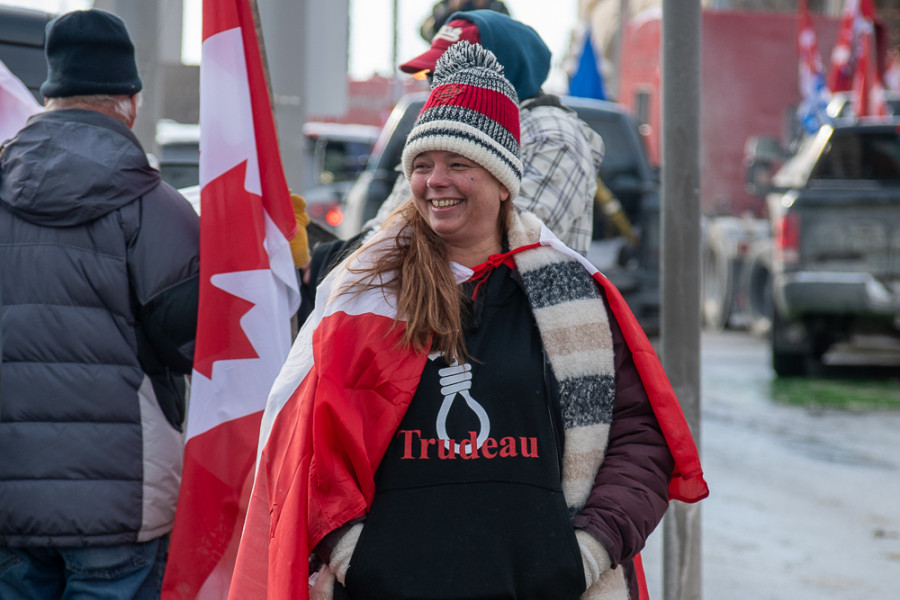
“There haven't been as many disruptions since that initial incident,” Ciesieliki added. “There was an Indigenous veteran who came here yesterday to conduct a smudging ceremony and to help clean up areas where people urinated on the memorial. They cleaned up the tomb as well.”
In a similar vein, the Terry Fox statue that faces Parliament had been decorated in upside-down Canadian flags and signs bearing anti-mandate slogans. These flags, designed to signal a state of emergency, have become one of the protest’s most salient symbols.
On Jan. 30, which many Ottawans agreed was the crest of the chaos, the protesters stormed Rideau Centre. Barefaced protestors harassed the mall's employees and urged them to remove their masks, telling them: “You're free now!”
Citing security concerns, the Centre remains closed until Feb. 6.
Silas Barnes, an employee at a nearby BeaverTails, described similar scenes of stress and mayhem. “Fights are breaking out. I was attacked walking to work on Saturday morning. Two of us now have to be escorted home at night by our boss.”
Barnes claimed that protesters attempted to rip the staff's masks off and called them slurs. “On Twitter we've been labeled Swastika BeaverTails and Nazis because we will not serve people without a mask, even though we're contractually obligated by the [National Capital Commission] to enforce masks. Someone heiled Hitler at my booth on Saturday."
Barnes, who lives three blocks from the protest, also said the constant horns keep her up at night. “I haven't slept in three days.”
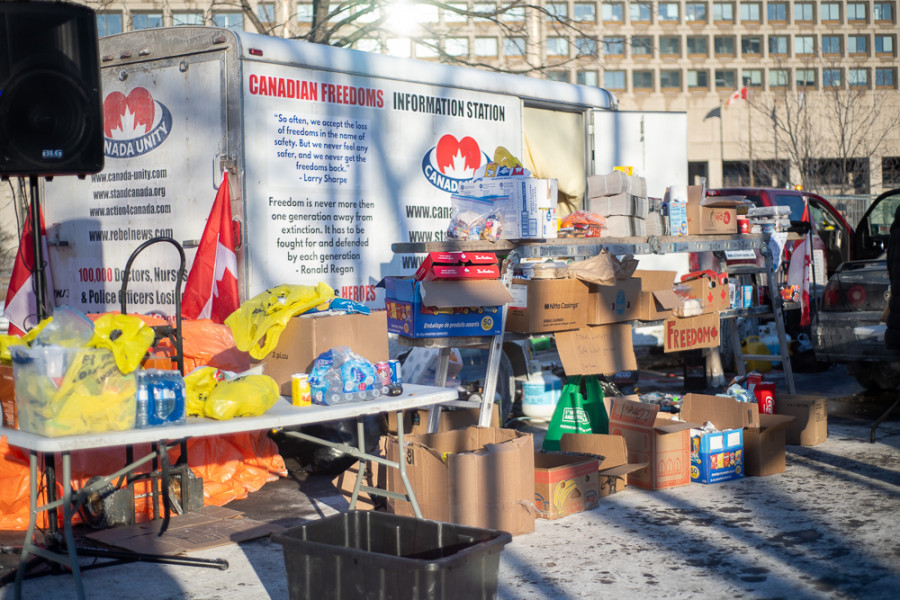
Hannah Nguyen, an employee at a nearby bubble tea shop, shared a similar experience. According to her, protesters would barge in and mock the employees for wearing masks. “When we told them that we'd call security, they pretended to only speak French. We'd let them order but say they needed to leave immediately, and they'd leave but shout things like, ‘Freedom for Canada!’” she said.
“I care about my health and my family members. I don't feel comfortable with them not wearing masks,” Nguyen said. “I just want them to get out of the store so we can protect other customers.”
As the convoy first rolled into the capital, Ottawans were quick to capture photos of protesters brandishing Nazi and Confederate flags. The photos caused shock and disappointment among many, but the movement’s far-right connections were apparent from the outset.
Both organizers of the truckers' GoFundMe page, which has so far ammassed more than $10 million, have been recorded making Islamophobic comments in the past. One, B.J. Dichter, compared Islam to syphilis, among other similar claims. The other, Tamara Lich, is a politician associated with the Albertan Maverick party. According to the Canadian Anti-Hate Network, Lich has written and shared articles which promote Islamophobic conspiracy theories, none of which were out of step with the views expressed at the protest.
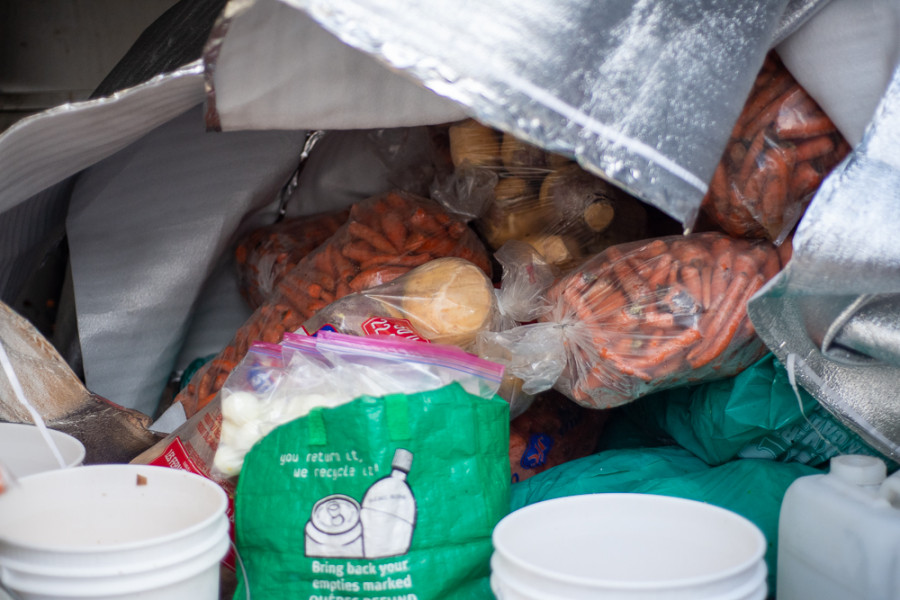
Pat King is also listed as a contact for the Alberta North part of the convoy. King is a member of the Yellow Vests, a group which claims to represent Alberta’s oil and gas interests but also regularly engages in anti-immigrant rhetoric.
King, notably, has spoken at length about what he calls an “anglo-saxon replacement,” a euphemism for the Great Replacement conspiracy theory according to which Western countries are being flooded with migrants to replace their white inhabitants.
When it came to his gripes with the government and its purported encroachments on his freedom, he stated that the situation could “only be solved by bullets.”
Appeals to “Make Canada Great Again” and the overwhelming presence of scripture belied the nationalist undercurrent of the gathering. Purple PPC tuques, as well as furtive nazi salutes, were commonplace.
“Don't tread on me” and Patriote flags also underscored this nationalist presence.
Right-wing conspiracy theories also found a wide platform at the protest. One speaker accused Trudeau of rubbing elbows with pedophiles, as well as funding the Muslim Brotherhood and ISIS, while others railed against Bill Gates and Anthony Fauci, accusing them of trying to tranquilise the population through vaccinations.
However, a disconnect can be seen between the protest's most vocal participants and the average member of the crowd.
Although much of the coverage around the protest has focused on the photogenic fanatics of the group, far greater was the number of people treating it like a casual outing. Parents brought their children, drinking hot chocolate and making snow angels.
Regardless of outcome, some are here for the long haul. As the protests unfolded, a number of protesters took on supporting roles.
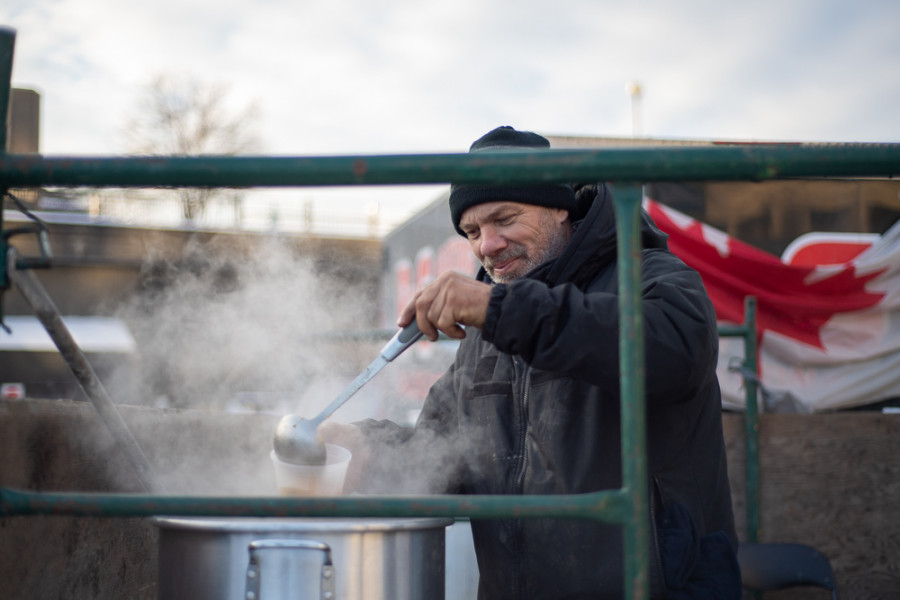
Pop up soup kitchens and supply trucks were also put in place in Confederation Park, where convoy volunteers worked to feed the crowds. Carole LeBlanc, a cook at one of these kitchens, added that they are well provisioned and that there were no plans to move on, despite declining numbers of participants.
“We’ll stay here until the trucks leave; we have vegetables for a month,” she said, adding that provisions from outside supporters have been vital. “People bring food. We ask on Telegram, chats, and Facebook for specifics.”
Barnes doesn't feel this minority compensates for the actions of their compatriots. "There are some protesters who have the common decency to realize [health measures] aren't our decision, but the large majority have resorted to aggression," she added.
Although police were few and far between from the truckers’ arrival to Sunday, Monday saw them posted in full force. Initially a dozen Ontario Provincial Police cars strong, their numbers were soon inflated by squads from Toronto, York, London, and Durham.
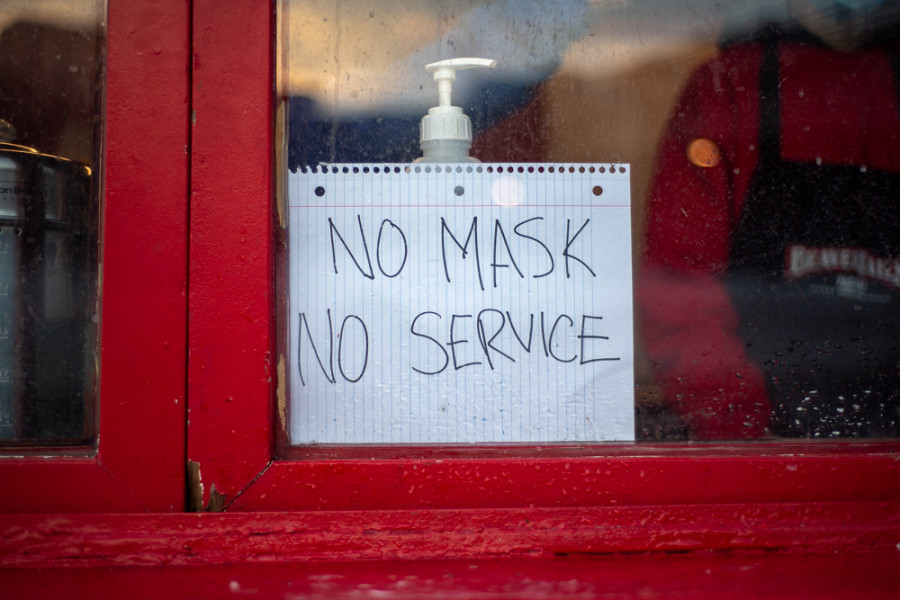
According to Ottawa Police, an estimated $800,000 a day has been spent policing the truckers. The costs of outside reinforcements is unknown.
Nevertheless, the convoy dwarfs them. All told, it stretched 26 blocks on Monday afternoon. Ottawa police estimate the amount of vehicles between 1,000 and 2,000.
The police's reticence to confront protesters, even as they engaged in property crimes and harassed Ottawans, was also of note. Ottawa's mayor, Jim Watson, claimed this reluctance stemmed from fears about escalating the situation.
However, many on social media were quick to point out that these fears were out of the ordinary. The police’s leniency stands in stark contrast with the relative brutality typically reserved for environmental and Indigenous activists.
But, as the rhetoric of certain protesters turns aggressive, it’s unclear what, if anything, will move police to action. As he gave his speech, Justin Long, a Yellow Vest from Hamilton, Ontario, warned of insurrection:
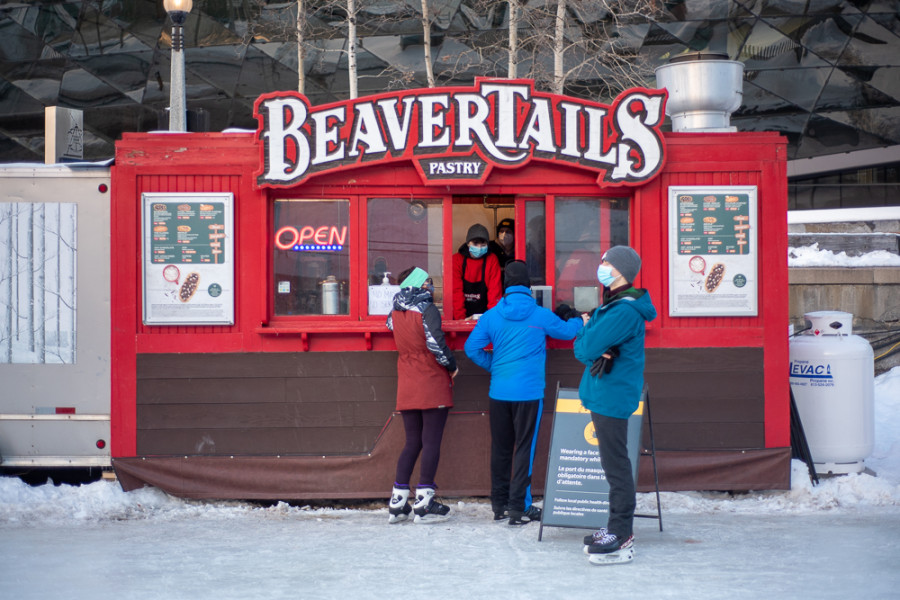
“If the government continues to commit these crimes against us, I would like to remind them we have had the right and the ability to overthrow any tyrannical government since the days of the Magna Carta. If Justin Trudeau doesn't think that'll ever happen here—if he really wants to test our resolve—well then he should just truck around and find out!”
Long’s comments reassert that, despite most of the convoy’s demands falling under provincial and local jurisdictions, as well as Justin Trudeau’s democratic re-election last September, their rage demands a target.
For now, GoFundMe has restricted access to the donations given to the convoy, citing transparency concerns. The platform is currently in touch with protesters but, for now, $1 million of the total sum has been unfrozen.
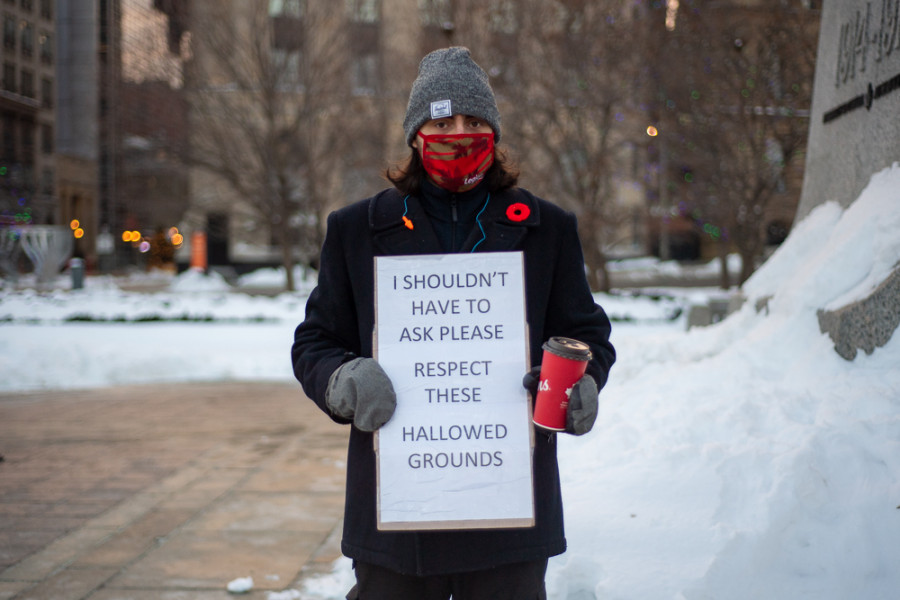
If they are given access to the money, Keean Bexte, a journalist aligned with the convoy, said that the sit-in could last from two to four years. So far, donations and determination have kept it afloat, but it's unclear how long these will last.
On Feb. 2, Ottawa Police Chief Peter Sloly said the following: “We are not as confident as we have been that police alone will resolve this situation [...]”
He entertained the thought of bringing in the army. Finally, he added: “There is likely no policing solution to this.”
Additional reporting by Zachary Fortier, Jaime Kerr, Caroline Marsh, and Elisabeth Ndeffo.

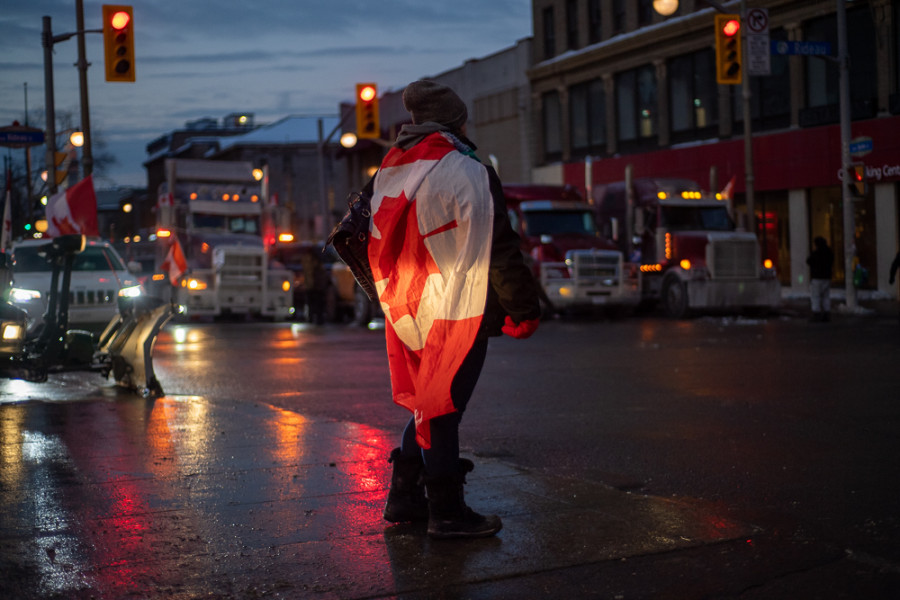
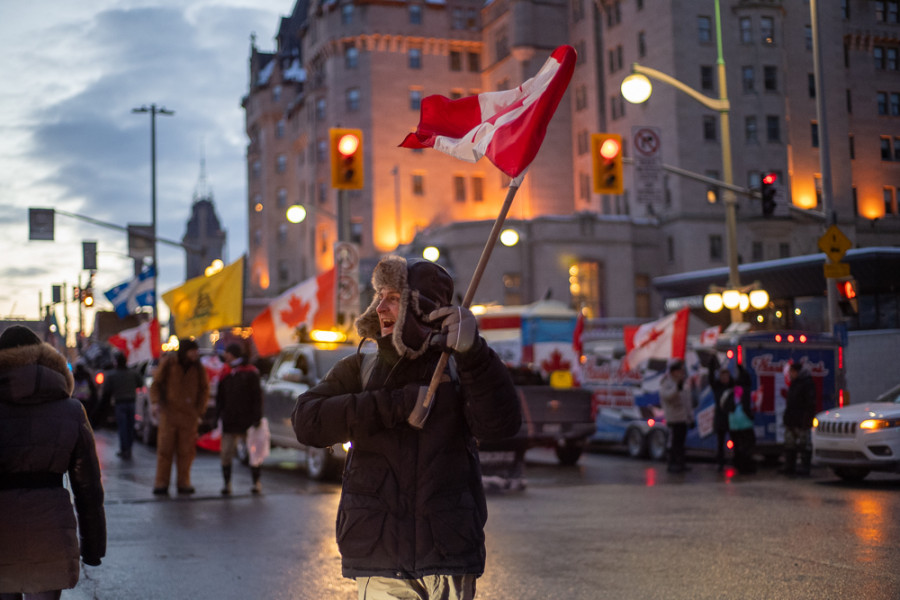
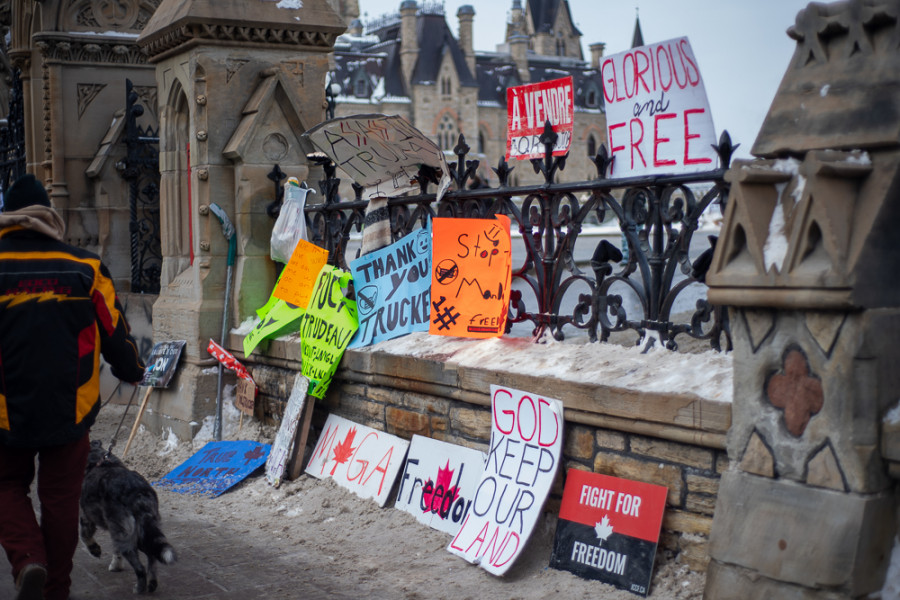
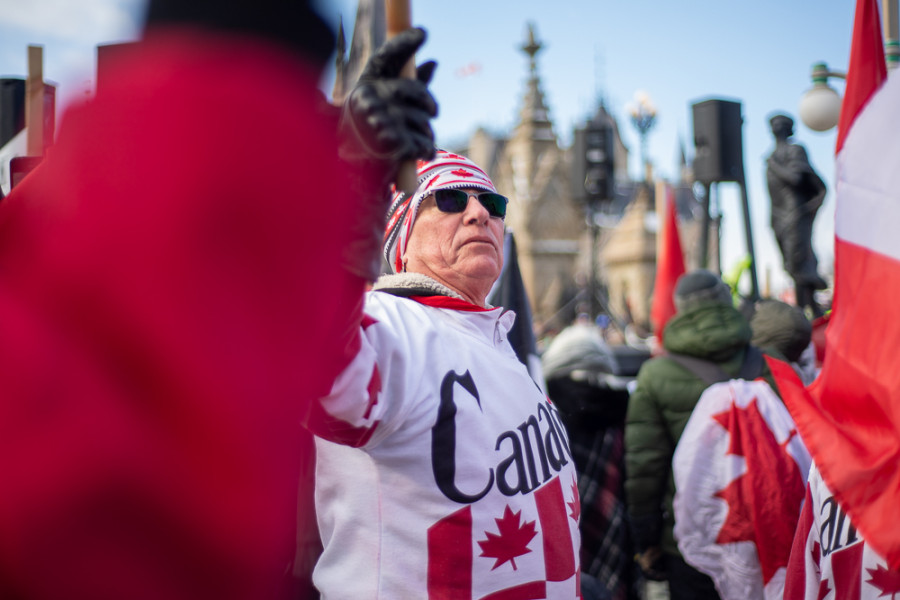
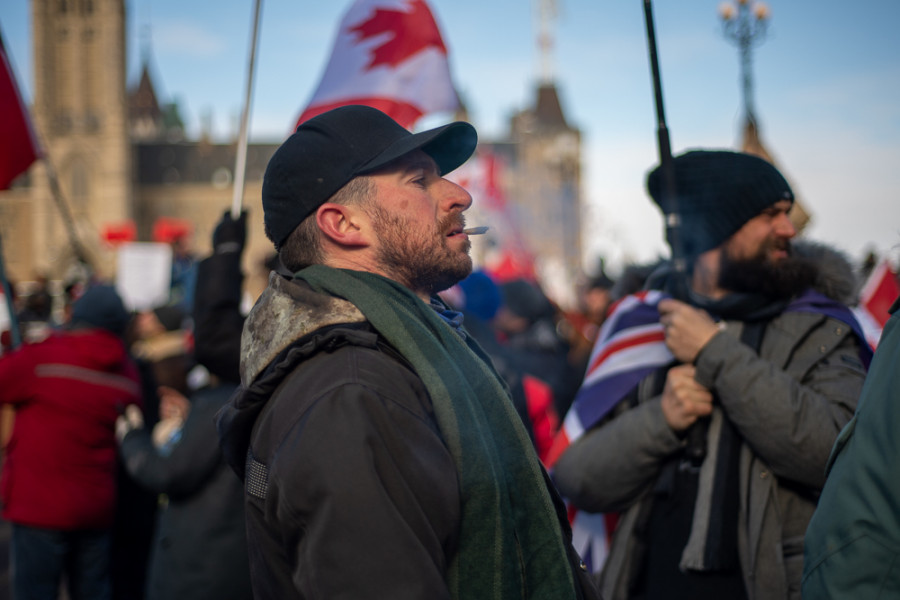


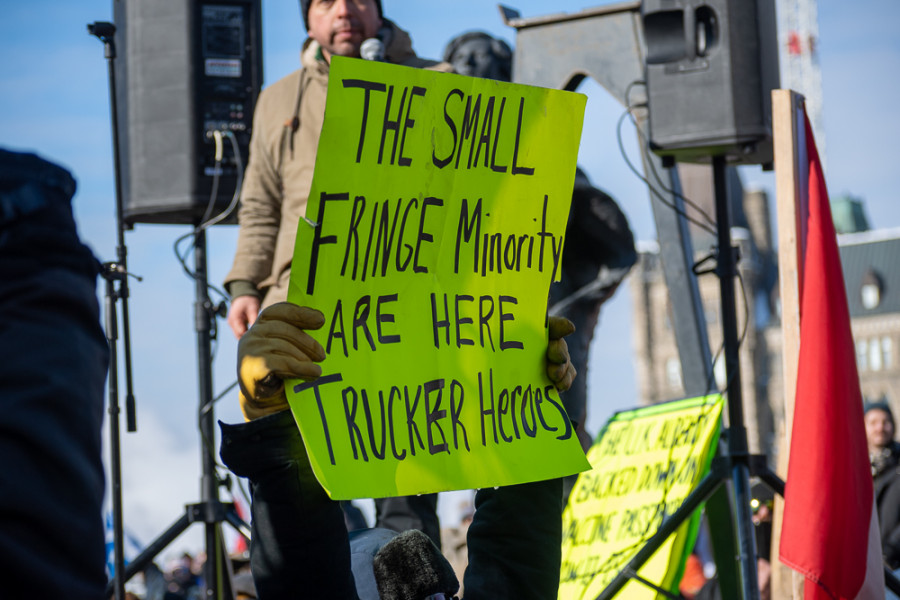

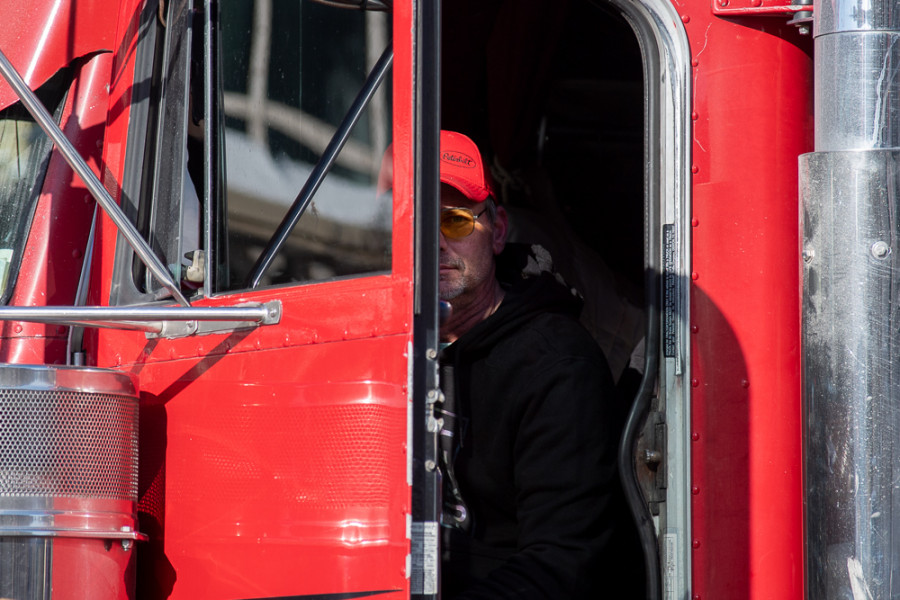
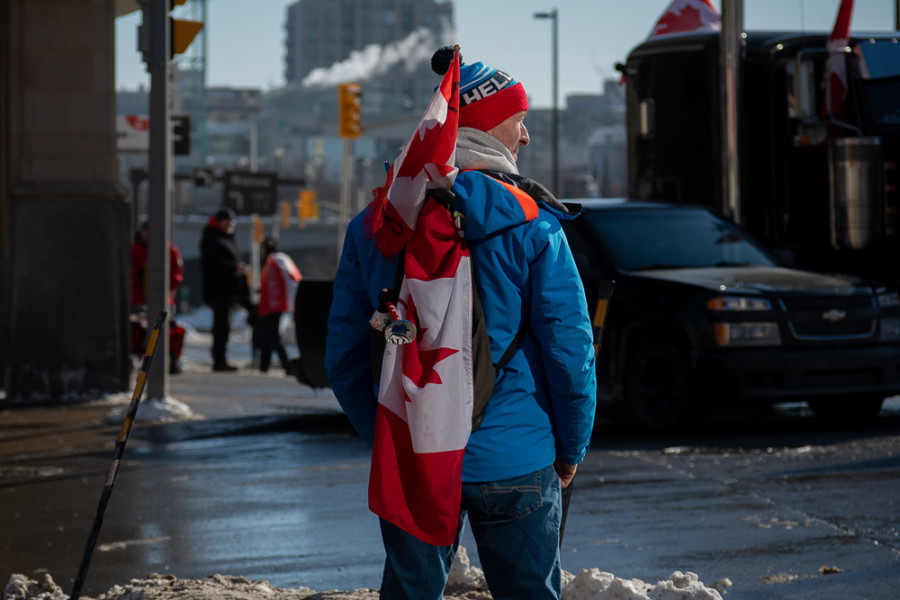
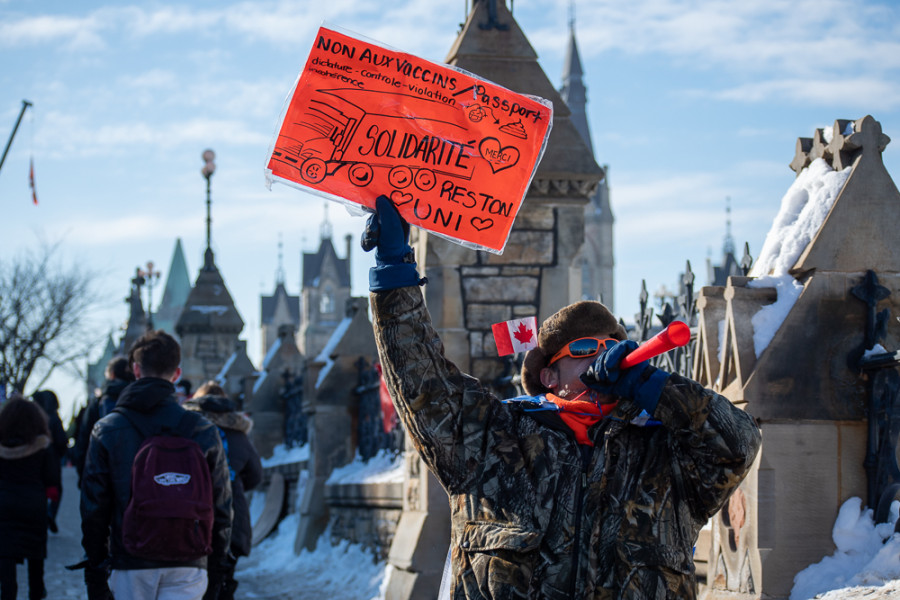
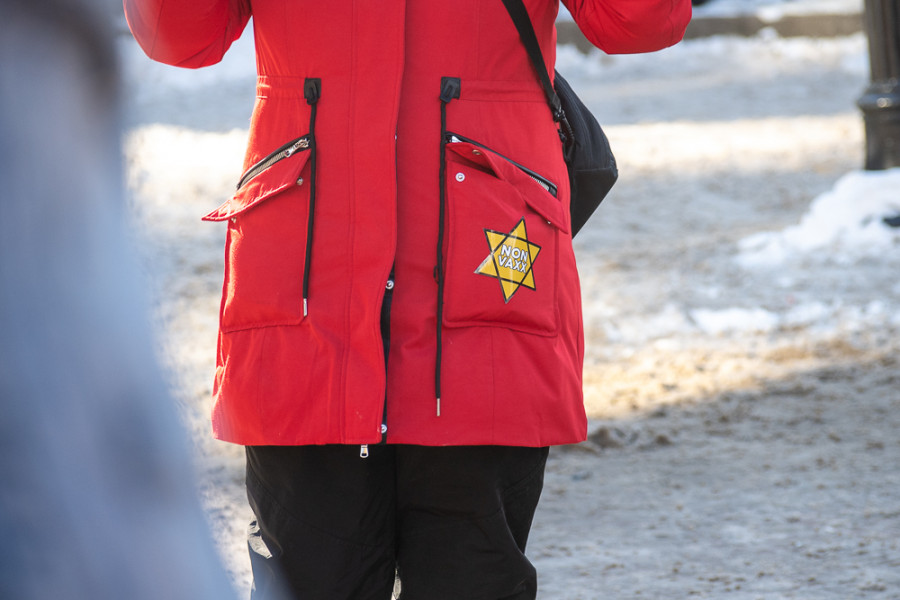
_600_832_s.png)

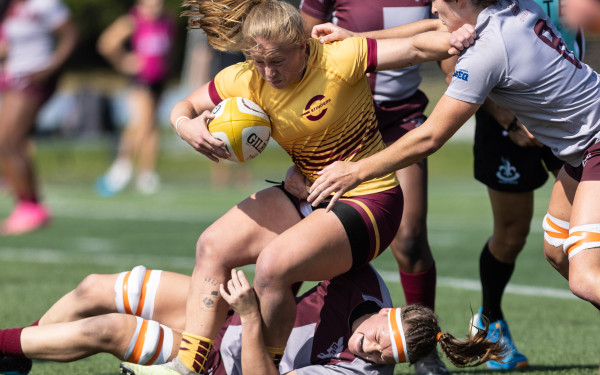
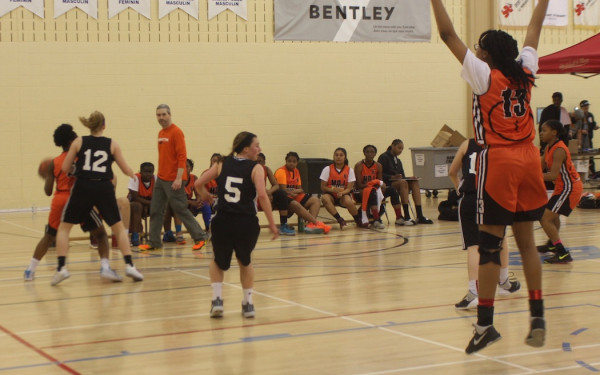
1_600_375_90_s_c1.jpg)
_600_375_90_s_c1.jpg)